China issued a white paper on national defense on Tuesday, reiterating its commitment to the peaceful development and arms control.
The paper for the first time unveiled China's ambition of "basically accomplishing mechanization (of the military) and making major progress in informationization by 2020" and "realizing modernization by the mid-21st century." [Full Story]
|
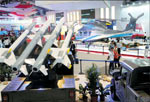
|
Nation chooses to grow peacefully
Peace and development remain the principal themes of the times, and the pursuit of peace, development and cooperation has become an irresistible trend of the times. However, global challenges are on the increase, and new security threats keep emerging.
|
|
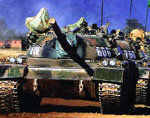
|
Defense expenditure 'reasonable'
China's defense expenditure has always been kept at a reasonable and appropriate level. In 2007, it equals 7.51 percent of that of the United States, or 1.38 percent of China's GDP, compared with 4.5 percent for the US, 2.7 percent for Britian and 1.92 percent for France. [Full Story]
|
 |
China would never seek hegemony
China would never seek hegemony or engage in military expansion now or in the future, no matter how developed it becomes. The country would stick to the road of peaceful development, and promote the building of a harmonious world with enduring peace and common prosperity. [Full Story]
|
|

|
International security cooperation
China persists in conducting security cooperation and maintaining common security with all countries. China has held over 20 joint military exercises or joint training exercises with a score of countries since 2007. [Full Story]
|
|
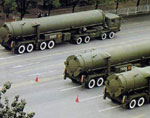
|
Nuke weapons not aimed at any country
In peacetime, the nuclear missile weapons of the Second Artillery Force are not aimed at any country. But if China comes under a nuclear threat, the nuclear missile force will get ready for a nuclear counterattack to deter the enemy from using nuclear weapons against China. [Full Story]
|
|
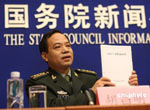
|
Military policy a defensive one
China pursues a national defense policy which is purely defensive in nature. China places the protection of national sovereignty, security, territorial integrity, safeguarding of the interests of national development, and the interests of the Chinese people above all else. [Full Story]
|
|
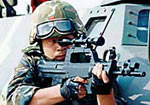
|
Capabilities to counter threats improved
The People's Liberation Army has been dedicated to performing its new historical missions and improving its capabilities to counter various security threats and accomplish diversified military tasks. [Full Story]
|
|

|
Participation in UN peacekeeping operations
China has consistently supported and actively participated in the peacekeeping operations in line with the spirit of the UN Charter. The People's Liberation Army (PLA) has sent 11,063 military personnel times to participate in 18 UN peacekeeping operations since 1990. [Full Story]
|
|
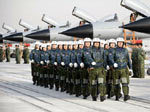
|
Chinese army enhances mobility
China's army has enhanced trans-regional mobility and developed three-dimensional offense and defense ability. The artillery forces have been working to develop a three-level operational command system and deploy a series of advanced weapons and equipment. [Full Story]
|
|

|
Nation supports arms control
China supports international efforts in arms control, disarmament and non-proliferation. All nuclear-weapon states should make an unequivocal commitment to the thorough destruction of nuclear weapons, and reduce the role of nuclear weapons in their national security policy." [Full Story]
|
The white paper titled China's National Defense in 2008, issued by the Information Office of the State Council, consists of 15 parts.

